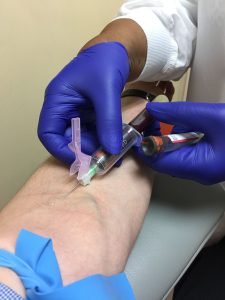Hospital Blood in Texas DWI Cases (Part 2)
 However, Texas allows the admissibility of medical laboratory blood that is drawn and tested at hospitals using indirect enzyme tests to be admissible in a driving while intoxicated case. This is despite the fact that the testing is a much less reliable enzyme test through a chemical reaction that is not testing only ethanol quantitatively or forensically. Normally, only blood plasma is tested, not whole blood, even though the driving while intoxicated statute says whole blood. Thus, a conversion formula is used even though each person’s plasma ratio is different.
However, Texas allows the admissibility of medical laboratory blood that is drawn and tested at hospitals using indirect enzyme tests to be admissible in a driving while intoxicated case. This is despite the fact that the testing is a much less reliable enzyme test through a chemical reaction that is not testing only ethanol quantitatively or forensically. Normally, only blood plasma is tested, not whole blood, even though the driving while intoxicated statute says whole blood. Thus, a conversion formula is used even though each person’s plasma ratio is different.
Hospital blood testing is for medical purposes and is generated to give medical providers a quick snapshot of the patient’s blood for medical treatment purposes. The machines are typically calibrated every six months or so, unlike a gas chromatograph which is calibrated every day. They may run quality control checks, but this is not calibration. Hospital blood testing normally cannot tell the difference between ethanol and isopropanol that is used to clean a blood draw site, and cannot tell the difference between ethanol and acetone and other chemicals, including chemicals in IV bags.
Hospitals also normally only run one test a day, rather than two tests on the same sample that the Department of Public Safety runs on a gas chromatography machine. These tests have up to a 25% error rate, which means that close cases should not normally be filed and should certainly be litigated if so. Also, these machines are not required to run a forensic test curve of five points like a gas chromatograph machine, which is the minimum for a forensically reliable sample. Additionally, we often do not get computer generated printouts of how the machine came to the calculation it did, another check on forensic quality. Finally, a hospital blood test does not have internal standards, which a Department of Public Safety test uses to test that the machine is actually reading ethanol alone. Without these internal standards, we do not know what the actual ethanol level in the plasma sample actually is.
 Sherman & Plano, TX Criminal Defense Lawyer Blog
Sherman & Plano, TX Criminal Defense Lawyer Blog

